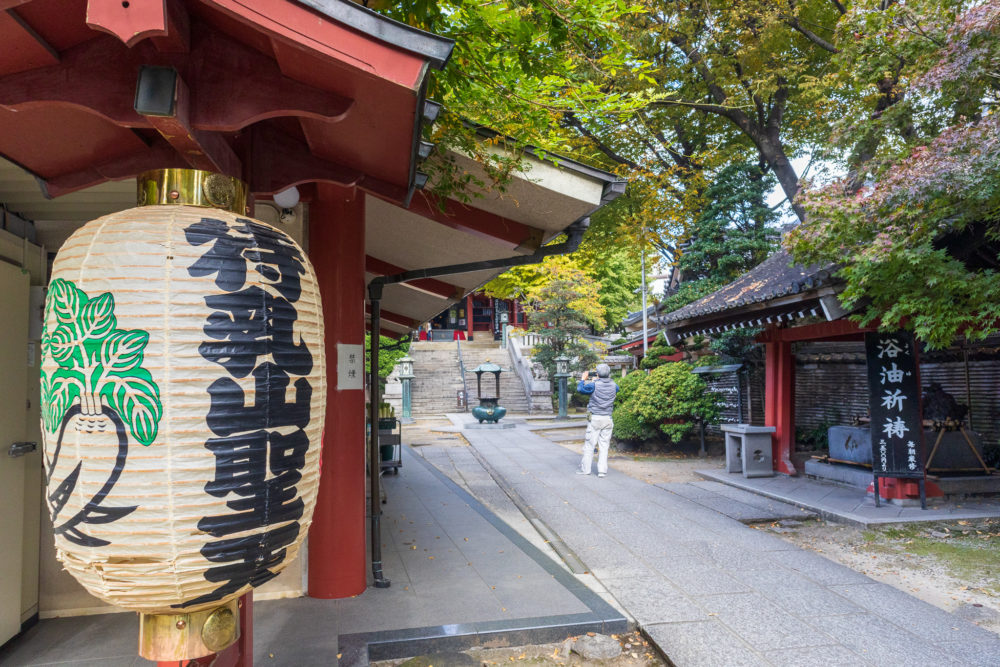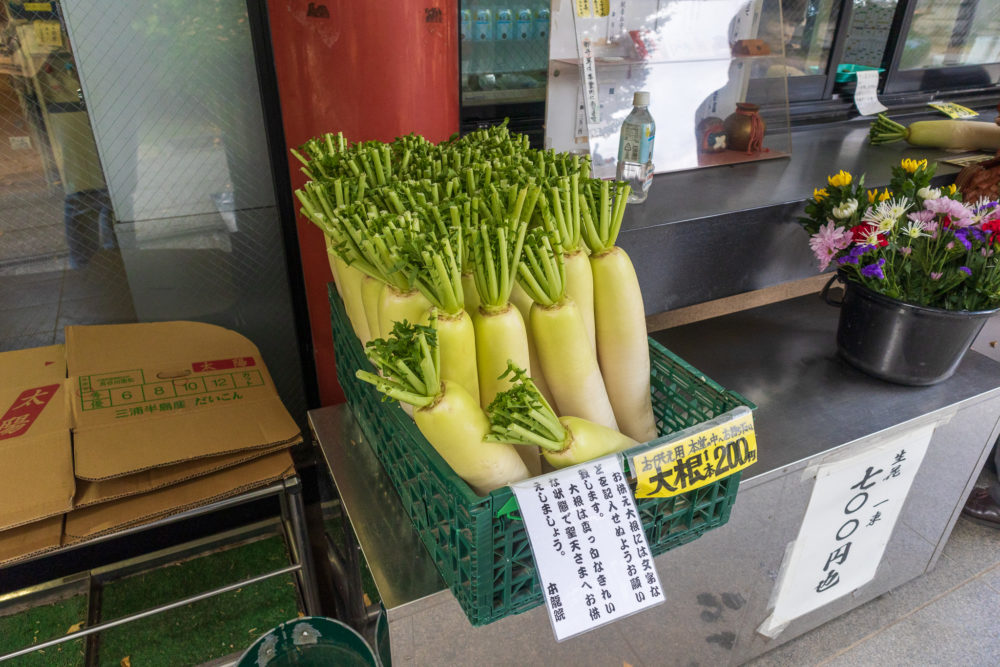The “Shrines and Temples” category of the Tokyo Shitamachi Guide presents Shinto shrines and Buddhist temples in Tokyo’s Shitamachi area, which is the area along and east of the Sumida River.
Each time, we recommend an engaging location for your sightseeing experience in Tokyo. In this article, we will focus on Matsuchiyama Shoden Temple, a Buddhist temple in Asakusa, Taito Ward.
Matsuchiyama Shoden Temple is a Buddhist temple of the Shokannon sect. This sect is relatively new, and Sensoji Temple is its head temple.
The official name of Matsuchiyama Shoden Temple is Matsuchiyama Honryuin Temple. As the principal image of this temple is Daisho Kangiten, also known as Shoden, locals have been calling it Matsuchiyama Shoden Temple.
Matsuchiyama Shoden Temple is located on the top of Mt. Matsuchiyama, which is said to be the lowest mountain in Tokyo. As this temple provides a monorail, anyone can access it easily.
This article will provide clear and easy-to-understand information on various topics related to Matsuchiyama Shoden Temple, including:
- Historical background
- Enshrined deities
- Highlights
- Transportation options
- etc.
Reading this article will help you gain a better understanding of Matsuchiyama Shoden Temple. You can use it as a reference when you visit the temple.
This article is also available in Japanese. You can access it at the following link:
History
According to Matsuchiyama Shoden Temple, the history of this Buddhist temple dates back to the 6th century.
In 595, the land in this area suddenly rose and became what is now known as Mt. Matsuchiyama. According to legend, a golden dragon appeared and protected the mountain at that time.
In 601, a severe drought hit Mt. Matsuchiyama and the surrounding area. As a result, local people living in the region faced a significant challenge because they had no water or food.
Juichimen Kannon appeared in form of Daisho Kangiten and saved the local people.
Juichimen Kannon is a Buddhist deity that represents compassion and mercy. This deity is often depicted with eleven faces and a thousand arms, which have the following meanings:
- Eleven faces represent different kinds of compassion.
- A thousand arms signify the various ways in which Juichimen Kannon helps those in need.
According to Buddhism, Kannon changes into various forms to listen to the sufferings and wishes of many people. Daisho Kangiten is one of those forms in this case.
People thanked Daisho Kangiten and built a Buddhist temple for this deity on Mt. Matsuchiyama. This is the beginning of Matsuchiyama Shoden Temple.
Enshrined Deities
Daisho Kangiten (大聖歓喜天)
The main Buddhist deity of Matsuchiyama Shoden Temple is Daisho Kangiten, also known as Kangiten and Shoden.
Daisho Kangiten originates from the Hindu deity Ganesha. Therefore, Daisho Kangiten also has an elephant head and a human body.
Ganesha was originally an evil deity that represented obstacles. But this deity was converted to Buddhism by the teachings of Juichimen Kannon. And Ganesha became a good god who protected Buddhism as Daisho Kangiten.
Daisho Kangiten is now a Buddhist deity who eliminates obstacles and brings good fortune and financial fortune. The blessings of this deity include:
- Marital harmony
- Descendants prosperity
- Business prosperity
- etc.
Bishamonten (毘沙門天)
Matsuchiyama Shoden Temple enshrines Bishamonten. Like Daisho Kangiten, Bishamonten is also a protector of Buddhism.
Bishamonten is a Buddhist deity of war. The blessings of this deity include:
- Competition wining
- Business prosperity
- Financial fortune
- etc.
Highlights
Daikon Radishes and Drawstring Bags

In the precincts of Matsuchiyama Shoden Temple, you may notice daikon radishes and drawstring bags placed in various locations. These items symbolize blessings from Daisho Kangiten.
The daikon radishe has the following meanings:
- Marital harmony
- Descendants prosperity
- Matchmaking
- Good health
The drawstring bag represents a gold dust bag and has the following meaning:
- Business prosperity
Daikon radishes as offerings

Matsuchiyama Shoden Temple has a local tradition of offering a daikon radish to Daisho Kangiten at the worship hall. You can buy one at the temple office for 200 yen. Or you can even bring your own from home.
Facing the worship hall, the temple office on the right hand side distributes daikon radishes called “O-sagari”. These daikon radishes were once offered to Daisho Kangiten by other worshippers.
The temple claims that you can receive even more blessings from Daisho Kangiten if you eat the O-sagari.
Yokuyu-Kito (the oll bathing prayer)
Yokuyu Kito (literal translation: “oil bathing prayers”) is a secret ritual to enhance the power of Daisho Kangiten.
Daisho Kangiten is a Buddhist deity who lives in the heavenly world of Buddhism called “Ten” (Devaloka in Hindi). Those who live in this world have not yet attained enlightenment, so they still have worldly desires.
The Yokuyu Kito ritual involves washing away the worldly desires of Daisho Kangiten using clean oil. This ritual serves to enhance the virtue of the deity, according to Matsuchiyama Shoden Temple.
If you request the Yuyoku Kito at the temple, a Buddhist monk will perform the ritual for you every morning for a week. This ritual is said to make your wishes come true.
The Sakura Rail (Monorail)
Matsuchiyama Shoden Temple is located on the top of Mt. Matsuchiyama. For that reason, the temple provides a monorail named the Sakura Rail in the parking lot on the east side of the temple.
The Sakura Rail is probably the shortest monorail in Japan, as Mt. Matsuchiyama is only 10 meters high, which is the lowest mountain in Tokyo.
Sakura Rail is open to worshipers free of charge, and it is available from 7 a.m. to 4:30 p.m. This monorail has only two seats; you should be patient if you want to use it with a large number of people.
The Tsuijibei Wall
The Tsukiji wall is a sturdy wall made of alternating mud and roof tiles. When you climb the stairs on the approach to Matsuchiyama Shoden Temple, you will find remains of the Tsuijibei walls on the right-hand side.
In the 6th century, the Tsuijibei wall was widely used in samurai residences and temples for safety reasons.
There are only a few places in Tokyo where you can find the Tsuijibei wall. Some examples are Hodoji Temple in Minato Ward, and Kannonji Temple in Taito Ward, in addition to Matsuchiyama Shoden Temple.
Utagawa Hiroshige, a legendary Ukiyo-e artist, featured the Tsuijibei wall at Matsuchiyama Shoden in his works. They are important folk properties that allow you to learn about the lives of people in the Edo period.
Japanese Garden
Matsuchiyama Shoden Temple features a lovely Japanese garden in its precincts. Here, you can enjoy various plants, including hydrangea, weeping cherry, camellia, and maple.
The garden also includes a pond where visitors can admire large and graceful Nishikigoi fish swimming. Additionally, there is an enshrined Jizo Bodhisattva, who serves as the guardian of the temple and your household’s safety.
This Japanese garden is open to worshipers free of charge from 9 a.m. to 4 p.m.
The Seven Lucky Gods of Asakusa (Bishamonten)
Bishamonten at Matsuchiyama Shoden Temple is a member of the Seven Lucky Gods of Asakusa.
The Seven Lucky Gods of Asakusa refer to the seven lucky gods who are enshrined at nine Shinto shrines and Buddhist temples in Taito Ward and Arakawa Ward.
Visiting the Seven Lucky Gods of Asakusa is a great way to explore the Asakusa area. Many Japanese tourists enjoy this activity year-round, and you can do it too.
For more information about the Seven Lucky Gods of Asakusa, please refer to the following article:
Other Useful Information
Opening Hours
- From 09:00 to 16:00
TEL
- 03-3874-2030
Address
- Asakusa 7-4-1, Taito-Ku, Tokyo, 111-0032
Google Map
Public Transport (Train)
- 10-minute walk from Asakusa Station on the Ginza Line
- 10-minute walk from Asakusa Station on the Asakusa Line
- 10-minute walk from Asakusa Station on the Tobu Isesaki Line (aka. the Tobu Skytree Line)
If you feel like walking from any of the Asakusa stations above, you may want to read the article below:
Public Transport (Megurin Bus)
- 1-minute walk from Sumida Koen Stop on Megurin North Route (via Asakusa)
- 4-minute walk from Riverside Sports Center-Mae Stop on Megurin North-South Route
Megurin Bus is a community bus operated by Taito Ward of Tokyo. We recommend you try the Megurin Bus when you visit Taito Ward. That’s because the Megurin Bus will take you to almost any place in the ward for a less expensive fare.
For more information about Megurin Bus, please refer to the following article:
Public Transport (Toei Bus)
- 2-minute walk from Sumida Koen Stop on Route 上 26 (Ue 26)
- 2-minute walk from Sumida Koen Stop on Route 東 42-1 (Higashi 42-1)
- 2-minute walk from Sumida Koen Stop on Route 東 42-2 (Higashi 42-2)
- 2-minute walk from Riverside Sports Center-Mae Stop on Route 東 42-3 (Higashi 42-3)
Public Restroom Availability
Yes. There is one next to the monorail stop in the parking area of the temple.
References
Conclusions
This time, we introduced Matsuchiyama Shōden Temple along the Sumida River in Asakusa. You may be surprised that there is a mountain in the Asakusa district, and there is a temple on top of it.
This temple has many must-see highlights, such as Daikon radishes and drawstring bags, Yokuyu-Kito, the Tsuijibei wall, and the Japanese garden.
When you visit the Asakusa district, be sure to visit Matsuchiyama Shōden Temple. You will feel the silence and solemnity that you wouldn’t expect from a temple in one of Japan’s leading tourist destinations.





